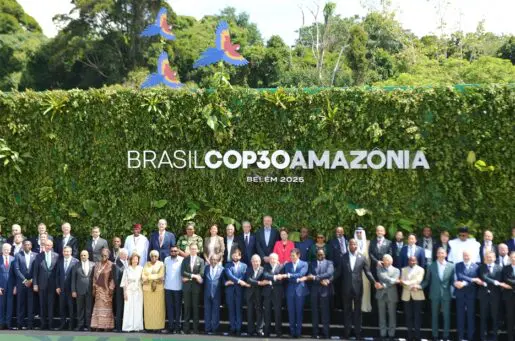Bioethics Forum Essay
When Science Splinters: Vaccine Federalism and the Erosion of National Standards
For more than half a century, Americans could rely on a unified, science-based system for vaccine recommendations. The Centers for Disease Control and Prevention, working through its Advisory Committee on Immunization Practices (ACIP), issued guidance that was nearly uniformly relied upon across the country and was operationalized in the CDC’s national immunization schedules. ACIP’s mandate, methods, and proceedings—set out in its public charter and evidence frameworks—created a transparent pathway from emerging scientific data to clinical recommendations.
That coherence did more than simplify workflow for pediatricians and internists; it facilitated broad access to ACIP-recommended vaccines via school vaccination policies, the Vaccines for Children Program and mandatory full cost insurance coverage under the Affordable Care Act. That structure, built on science, has kept the United States far safer and healthier: diseases that once defined childhood receded, like measles, mumps, chickenpox, and polio. The achievement was scientific, certainly, but it was also civic: a pluralist federation acting together on the basis of evidence to protect everyone.
In other words, in a properly functioning government, federal scientific agencies set nationally uniform recommendations based on the best available evidence, and states reliably follow federal guidance. In a well-functioning system, we would not want states to make recommendations and policies at odds with federal scientific standards. But this is not a properly functioning government, and Robert F. Kennedy Jr. is not a normal Secretary of Health and Human Services.
The coherence of this well-functioning system is now under direct strain. As the federal public health apparatus has been drawn into overt politics, states have begun, by necessity, asserting greater authority over immunization policy. The undermining of science at the CDC and FDA has spurred the creation of new interstate consortiums aimed at establishing independent, science-based guidance and purchasing frameworks. The Northeast Public Health Collaborative was formed in September by several northeastern states and New York City to develop independent, science-based vaccine recommendations in response to politicization at the federal level. Likewise, California, Oregon, and Washington established the West Coast Health Alliance for the same purpose.
What has emerged is a new era of vaccine federalism in which standards no longer flow from a single national scientific process, but from a patchwork of state or regional sources. Some coalitions of states have organized to sustain rigorous recommendations; others have aligned with compromised national leadership that questions the very premises of routine vaccination. The driver of this fragmentation is not methodological disagreement at the margins; it is a politicization of science itself under the current leadership of HHS—an environment in which longstanding scientific processes are subordinated to ideological aims, and in which the federal pronouncements that once anchored practice are in open conflict.
When large majorities are immunized, whole populations benefit through herd protection, including infants, transplant recipients, people on immunosuppressive therapies, and others who cannot be vaccinated or who mount weaker immune responses. Those benefits do not respect state lines. A jurisdiction that weakens its schedule jeopardizes not only its own residents but also those in neighboring regions who share schools, workplaces, and transportation corridors. Families who move across borders encounter conflicting requirements; clinicians licensed in multiple states face contradictory obligations; health insurers don’t know what vaccines to cover; and the public encounters federal guidance that diverges from what a given state prescribes. Where Americans once shared a single scientific baseline, they now confront a cacophony of competing claims about the same vaccines.
Vaccines are uniquely vulnerable to this kind of political fracture because their value is irreducibly collective. Occupying the space of the common good, they are different from most medical interventions that are more politically palatable under a “health freedom” paradigm. And it is why the normal bioethics value of personal or medical autonomy has far less traction when an intervention is intended to prevent harms to others, rather than being solely or primarily self-regarding.
Confusion is the immediate result of the political fracturing of vaccine policy, and confusion erodes trust. The CDC schedules long functioned as a touchstone because they condensed complex, moving streams of evidence—clinical trials, real-world effectiveness, pharmacovigilance, and post-marketing safety—into coherent recommendations. ACIP’s use of structured methods such as GRADE made its trade-offs legible. Parents did not need to parse raw data; they could rely on their clinicians, who in turn could rely on CDC. When that coherence fractures, the public is left to infer that the science itself is unsettled rather than the governance around it. A parent who sees one recommendation on a federal page and another in a state bulletin does not experience “healthy pluralism;” they experience doubt.
The inequities that follow are as predictable as they are avoidable. States that maintain evidence-aligned recommendations will tend to preserve high coverage and avoid large outbreaks. States that dilute or politicize standards will see coverage decline and preventable diseases return. These are often the same jurisdictions already grappling with higher burdens of poverty, chronic illness, and thin health care infrastructure. Vaccine federalism therefore deepens existing health disparities, concentrating preventable harm among those least positioned to absorb it. In ethical terms, a governance choice to break with the strongest evidence shifts risk onto children and medically vulnerable adults. In economic terms, it exports costs regionally: lost workdays for caregiving, hospitalizations, long-term complications, and surges that strain systems beyond state borders.
The law amplifies these dangers. For much of the 20th century, American courts judged physicians by the “locality rule,” asking whether conduct conformed to community custom. As medicine professionalized and communication collapsed distance, courts recognized that patients everywhere deserve access to the best available evidence and moved toward a national standard of care. As one court explained, modern medicine is a national enterprise and standards must reflect that reality. That is, one medical standard based on science applicable nationally. The Supreme Court’s landmark ruling in Jacobson v. Massachusetts (1905), which upheld vaccine mandates, gave states broad public health powers, but said it should be based on “the settled opinion of the medical profession.” Law and medicine converged on a single principle: professional responsibility is defined not by local politics, but by broadly accepted science.
Fragmentation now threatens to undo that convergence. Courts may face cases in which a physician complied with one standard—professional society guidelines, federal recommendations or state/regional standards—but departed from the others. All paths carry liability risk. The same injury could be adjudicated differently across borders, and clinicians could be punished for following the evidence in one jurisdiction and for following the statute in another. Malpractice law—designed to provide ex ante guidance and ex post fairness—becomes a mirror of the chaos it is asked to adjudicate.
These clinical and legal instabilities are magnified by federal contradictions that are political rather than epidemiological. Under current leadership, the FDA has narrowed Covid-19 vaccine indications in labeling in ways that diverge from long-established scientific consensus, at the same time that the CDC has weakened or threatened action on longstanding recommendations—even for routine childhood immunizations. In September, for example, ACIP softened Covid-19 guidance with weaker recommendations, nearly discouraged the universal hepatitis B birth dose for newborns, and cherrypicked data to undermine combination measles-mumps-rubella-varicella (MMRV) vaccine use.
Just recently HHS Secretary RFK Jr. and President Trump held a press conference on links between acetaminophen and autism, immediately contradicted by medical societies. In Truth Social, the president reiterated false claims about vaccines: BREAK UP THE MMR SHOT INTO THREE TOTALLY SEPARATE SHOTS (NOT MIXED!), TAKE CHICKEN P SHOT SEPARATELY, TAKE HEPATITAS B SHOT AT 12 YEARS OLD, OR OLDER, AND, IMPORTANTLY, TAKE VACCINE IN 5 SEPARATE MEDICAL VISITS!”
Career experts warned that all these moves would generate confusion; they did. Clinicians were left uncertain which signal to follow and which risk to prioritize: deviation from a weakened federal recommendation or deviation from a durable evidence base.
Contradictory federal signals are damaging enough; they are worse when reinforced by threats of professional liability. When national leaders suggest—explicitly or implicitly—that departing from newly weakened guidance may expose practitioners to legal risk, the message is unmistakable: compliance with politics is safer than fidelity to science. That inversion corrodes both medicine and law. It also contradicts the statutory architecture Congress enacted in the National Childhood Vaccine Injury Act of 1986, which created the Vaccine Injury Compensation Program to stabilize the system by ensuring compensation for rare harms, maintaining a reliable supply, and sustaining public confidence. Likewise, the Vaccines for Children Program, established by Congress in 1993, stabilized vaccine access for low-income and underserved children amid persistent measles threats. It further developed what is perhaps the most significant, substantive piece of health insurance law to date when it adopted the Affordable Care Act’s preventive services coverage provision, requiring coverage of ACIP-recommended immunizations without patient cost sharing.
These frameworks presupposed consistent national recommendations grounded in evidence. Vaccine federalism erodes that foundation by making the “national” standard contingent on geography and election cycles rather than method and data.
If federal leadership cannot be trusted to uphold the scientific standard, authority will be anchored elsewhere. The most legitimate anchors are the professional medical societies whose guideline processes are transparent, methodical, and continuously updated. The American Academy of Pediatrics publishes immunization guidance that clinicians respect because it is visible and auditable. The Infectious Diseases Society of America produce practice guidelines that are explicit about the strength of recommendations and the quality of evidence. The American College of Physicians translates prevention evidence into standards that scale across adult primary care. These guidelines are not sacrosanct; they are valuable because their authors show their work. Panels declare conflicts, grade evidence, publish rationales, and make revisions in light of new data. In the absence of coherent federal stewardship, professional-society guidelines should function as the unifying reference for clinicians and judges alike—restoring national consistency without ceding science to politics.
The danger of vaccine federalism is not confined to immunization. Once the principle is conceded that scientific standards can fracture along state lines, other domains of public health become vulnerable. One state may repudiate the safety and ethics of community water fluoridation, despite decades of monitoring and benefit. Another may rewrite antibiotic stewardship frameworks in ways that accelerate resistance. Another may endorse speculative claims about the risks of common medications, encouraging substitution patterns that raise harm without reducing disease. Fractured federal/state policies on access to medicines is already playing out in relation to abortions in a post-Dobbs world, including mifepristone. And Secretary Kennedy is right at the center of this political and legal dysfunction. Science becomes contingent on jurisdiction rather than evidence. The promise of equal protection through evidence-based care devolves into a geography-dependent patchwork of privilege.
Defenders of divergence often invoke federalism’s “laboratories of democracy.” The metaphor misfires here. Laboratories operate with common methods, shared rules of evidence, and replication before generalization. Failures are contained to prevent harm. Infectious diseases afford no such containment. They exploit gaps, externalize harms, and punish inconsistency. Divergent immunization standards do not produce disciplined experimentation; they produce outbreaks that travel. In economic terms, divergence exports costs. In ethical terms, it exports risk to people who did not consent to it.
The communication dimension matters just as much as the legal and political ones. The public’s understanding of science depends on clarity about what is known, how it is known, and what remains unknown or uncertain. Fragmentation makes such clarity difficult to maintain. When recommendations diverge without transparent methodological justification, people infer that the divergence is ideological. Often, they are right. The result is a self-reinforcing loop: perceived disagreement is taken as proof that the science is unsettled; that perception depresses uptake; lower uptake fuels outbreaks; outbreaks are misleadingly reframed as failures of vaccines rather than failures of governance. Once this cycle takes hold, repairing trust requires more than new talking points; it requires institutional choices that re-center method and evidence.
That is why repair must start with renewal. Federal public health agencies should be structurally insulated from political manipulation, resourced to evaluate evidence at the speed of data, and expected to publish the models and assumptions that underlie their recommendations. Regulatory labeling at the FDA and population-level recommendations at the CDC must be aligned procedurally, with visible pathways for reconciliation when signals diverge. The ACIP’s deliberative processes should be protected from interference and ensured timely access to the best available data. The federal government’s role in vaccine access should be reaffirmed as a commitment to evidence and equitable access rather than treated as a lever for ideological agendas.
States, for their part, should be expected to adopt professional-society guidance as the default standard unless they can demonstrate—with methods, data, and transparent reasoning—why deviation is warranted. Courts can reinforce this discipline by treating departures from high-quality professional society guidelines as presumptively suspect and by asking governments to show their work. Health systems and payers can align coverage, quality metrics, and clinical pathways with those same guidelines, reducing incentives to chase localized, non-evidentiary rules.
Critics will counter that this approach re-centers expertise in ways that can alienate communities or that professional bodies carry their own biases. The answer is not to replace transparent methods with opaque politics. It is to democratize method: maintain fidelity to evidence-based frameworks, broaden representation on advisory panels, enforce conflict-of-interest policies, invite public comment, and invest in implementation science that addresses barriers to uptake in diverse settings. Anchoring policy in professional society guidelines does not end debate; it disciplines debate by evidence.
Jacobson is the constitutional anchor for public health in a federalized system. The historic ruling captures a core constitutional ethic: state public health power is legitimate when it is tethered to broadly accepted science. The 20th century’s move away from locality-based medicine, the institutionalization of ACIP, and the federal frameworks of the National Childhood Vaccine Injury Act, the Vaccines for Children program, and the Affordable Care Act’s coverage requirement all extended that ethic—building structures that make it possible for science to function as a national standard.
Vaccine federalism is a retreat from that settlement. It is not a benign expression of federal diversity but an erosion of the conditions under which a diverse country can act together on the basis of evidence. Allowing immunization standards to splinter across jurisdictions risks confusion, inequity, and corrosion of trust. The path forward is not complicated in principle, even if it will be difficult in practice: restore independence and credibility to federal public health bodies; align FDA labeling with CDC recommendations using transparent, auditable methods; and explicitly recognize professional society guidelines as the operative reference for practice and adjudication when government falters. What the law and ethics require remains what science requires. Allowing policy to drift from that truth is the fastest way to lose both.
Richard Hughes IV, JD, MPH, is a health lawyer and professorial lecturer at the George Washington University Law School.
Lawrence O. Gostin, JD, is Distinguished University Professor and the founding Linda D. and Timothy J. O’Neill Chair in Global Health Law at Georgetown University and a Hastings Center Fellow. X: @lawrencegostin














Thanks for this essay. It brings light in dark times.
This article raises important points about the balance between state and federal authority in public health, especially regarding vaccinations. It’s crucial to ensure that science informs policy rather than political agendas.